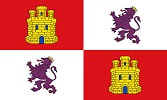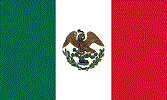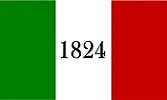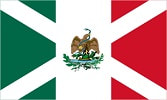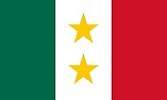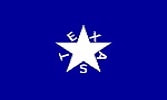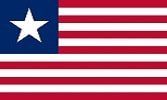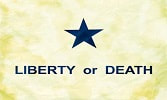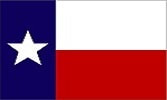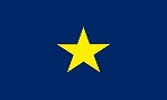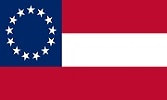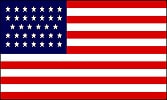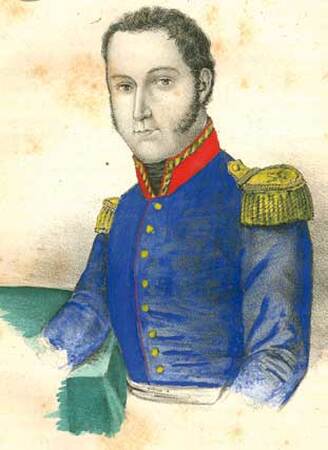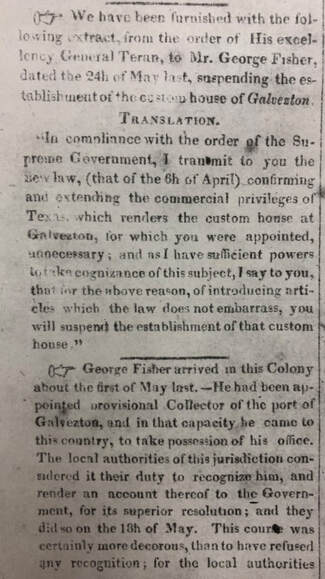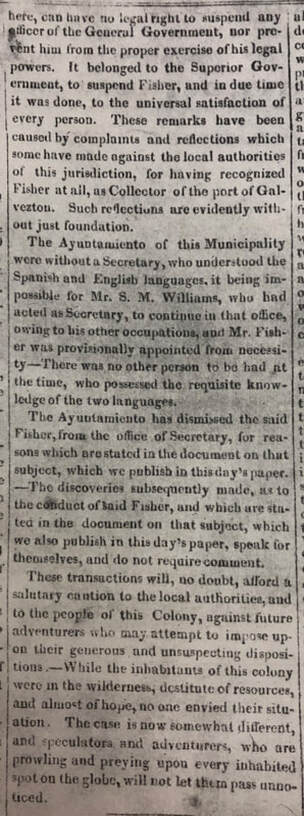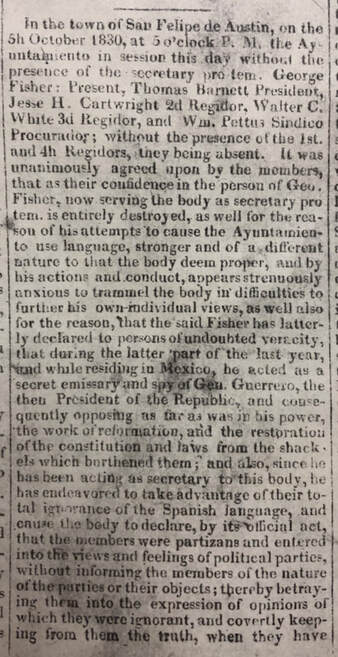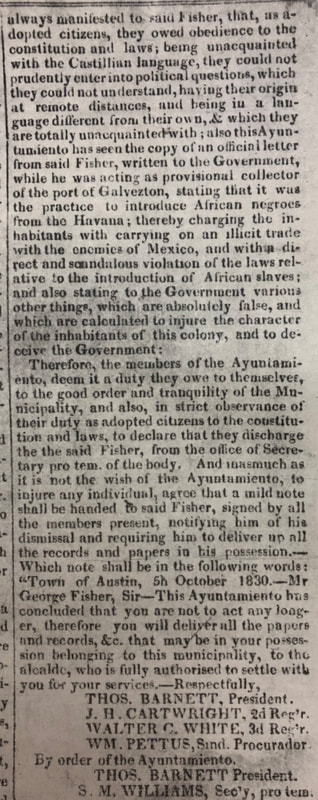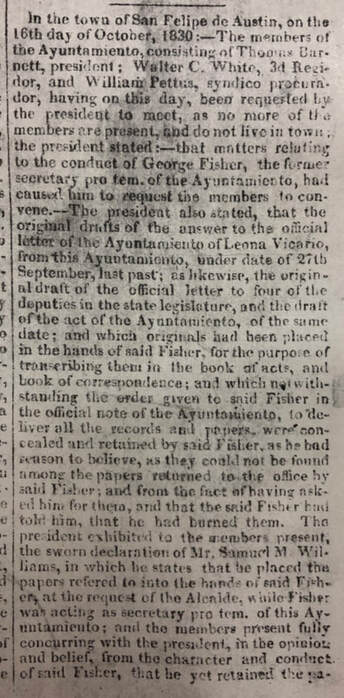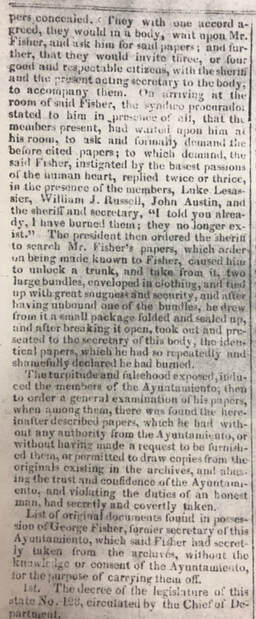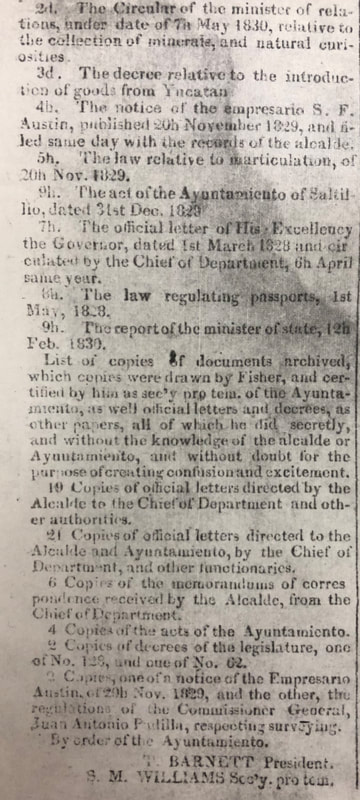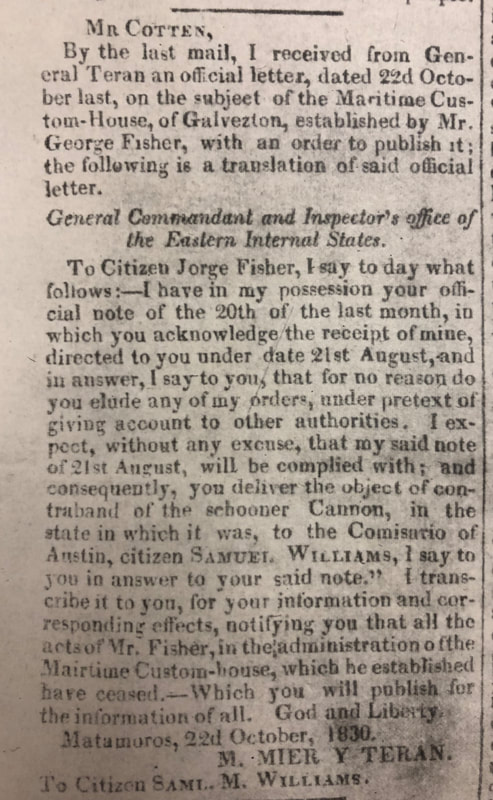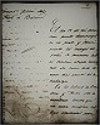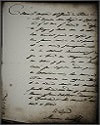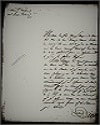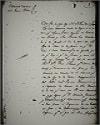Suspension of the "Aduana Maritíma de Galvezton" in 1830
|
Manuel de Mier y Terán became the military commander and political chief of the Eastern Interior Provinces of Mexico (which included Texas) in 1829. He did not agree with creation of custom houses in Texas, since the Law of 6-Apr-1830 had extended free trade for another four years (i.e., from 1830 to 1834). The law also added the role of federal commissioner of colonization to Terán's duties. He was also probably concerned that Fisher had been dispatched by now-deposed civil authorities (and his political opponents) in Mexico City, into his jurisdiction. So, hearing of George Fisher's activities in Texas, he wrote from his headquarters in Matamoros to Fisher on 24-May-1830, suspending the "Aduana Maritíma de Galvezton". But, Fisher was traveling and otherwise occupied for the month of Jun-1830 with the schooner Cañon, and his other plans, and did not receive Terán's message until 1-Jul-1830 while still standing guard aboard the schooner moored at Brazoria. Fisher found himself in an embarrassing position and, thinking Terán did not understand the need to at least enforce the law against contraband and also to regulate immigration, he wrote back to Terán and others, arguing for continuation of his office. He lingered in Austin's Colony, expecting some kind of counter-order. Finally, Terán had to rebuke Fisher with an explicit message on 22-Oct-1830, leaving no doubt he was to quit his office (see article at bottom right). No permanent customs facilities are known to have been constructed at this time.
|
|
Perhaps in an attempt to prove his worth, Fisher attempted to investigate & perhaps implicate the Alcalde of Brazoria, John Austin, in the crime of smuggling. He wrote to the man he hired as a boarding officer and pilot at the mouth of the Brazos, Asa Mitchell, on 22-Sep-1830, inquiring whether John Austin was a consignee for contraband tobacco aboard the schooner True Blue, which had grounded at the Brazos Bar a few days earlier. Mitchell’s response on 24-Sep-1830 indicated John Austin & others did land and sell some of the salvaged cargo, and that Mitchell felt the captain had intentionally grounded the vessel for its insurance value.
Fisher, wishing to remain in Texas, even made application to Stephen F. Austin for a land grant in his colony. Due to his bilingual skills, he was hired as secretary of the San Felipe Ayuntamiento (district council). But, he was suspected of spying for Mexican government officials, and was found to be hiding copies of the Ayuntamiento's correspondence. The officers, no doubt aware of his scheming, fired him on 5-Oct-1830, and he returned to Mexico in a cloud of distrust. As they said at the time, he "took French leave". The usually affable Stephen F. Austin wrote soon after in a letter “We have had the misfortune to receive a visit here from one of those miserable and shameless adventurers who have neither country nor principles of honesty – George Fisher ...”. |
|
While in Matamoros, Mexico in late 1830 and early 1831, Fisher worked to rehabilitate himself with Terán, justifying his seizure of the Cañon. He also published documents, including an affidavit from Terán, indicating that he was not suspended due to the Cañon controversy, but the office was discontinued for other reasons (i.e., the free trade extension) having nothing to do with him. This resulted in much of his correspondence being copied for Samuel May Williams, which thankfully has come down to us in his papers. Apparently, Fisher was successful, as Terán reinstated him as Administrator of the port of Galveston in late Sep-1831, and the two men traveled to the new Fort Anahuac in Nov-1831, to personally oversee creation of the main customs office at Anahuac, with customs houses at Point Bolivar and a "Receptoria Subalterna" (Subordinate Reception) at Brazoria. But, the ever-officious Fisher issued an ill-conceived decree on 24-Nov-1831, that all incoming and outgoing ships of the upper Texas coast had to obtain authorization from him at Anahuac. This location was hard to reach by sea or land, and was met with great disagreement by the colonists of Texas. Thus, Fisher and the autocratic behavior of Juan Davis Bradburn created the main antecedents for the Anahuac Disturbances of 1832. |
Click below on the thumbnails for copies of primary documents (not readily available elsewhere), or the "black buttons" for an attempt at transcription and translation, which each tell a part of this story, contained in dispatches now found in the ....
Samuel May Williams Collection
Courtesy of the Galveston & Texas History Center, Rosenberg Library (Galveston, Texas)
A narrative report that discusses all of the research on
the several Forts Velasco is available at the link below:
<<< Seizure of the Schooner Cañon < click for other pages > Brazos Customs Post Re-Established >>>
Background wallpaper is from 1834 version of "Map of the State of Coahuila and Texas" by William Hooker of New York
Background wallpaper is from 1834 version of "Map of the State of Coahuila and Texas" by William Hooker of New York
